
Encamp: A Hidden Gem in the Pyrenees
Discover Encamp in Andorra – a blend of natural beauty, thrilling winter sports, and rich cultural experiences in the heart of the Pyrenees.
Encamp, nestled in the heart of Andorra, offers a unique blend of natural beauty and cultural richness. Located in the Pyrenees mountains, this charming town is an ideal destination for those who love outdoor adventures and scenic landscapes. Whether you're visiting in summer or winter, Encamp has something to offer every traveler. In the winter months, Encamp transforms into a winter wonderland, perfect for skiing and snowboarding. The Grandvalira ski area, one of the largest in the Pyrenees, is easily accessible from Encamp, making it a favorite spot for winter sports enthusiasts. The Funicamp cable car, one of the longest in Europe, takes you from the town center to the slopes in just 15 minutes. During the warmer months, Encamp is a paradise for hikers and nature lovers. The surrounding mountains offer numerous trails with breathtaking views. The Engolasters Lake is a must-visit, where you can enjoy a peaceful walk or a picnic by the water. The town itself is home to beautiful Romanesque churches, such as Sant Romà de les Bons, which add a touch of historical charm to your visit. Encamp is also known for its vibrant cultural scene. The National Automobile Museum showcases a fascinating collection of vintage cars, while the local festivals and events offer a glimpse into Andorran traditions and hospitality. The town's restaurants and cafes serve delicious local cuisine, providing a perfect end to a day of exploration. Whether you're seeking adventure, relaxation, or cultural experiences, Encamp in Andorra is a destination that promises to leave you with unforgettable memories.
Local tips in Encamp
- Visit the Funicamp early in the morning to avoid long queues and enjoy a full day on the slopes.
- Pack layers of clothing; weather can change quickly in the mountains.
- Explore local cuisine at small, family-run restaurants for an authentic taste of Andorra.
- Carry some cash, as smaller shops and cafes may not accept credit cards.
- Take advantage of the free guided tours offered by the Tourist Office to learn more about the area's history and culture.
Encamp: A Hidden Gem in the Pyrenees
Encamp, nestled in the heart of Andorra, offers a unique blend of natural beauty and cultural richness. Located in the Pyrenees mountains, this charming town is an ideal destination for those who love outdoor adventures and scenic landscapes. Whether you're visiting in summer or winter, Encamp has something to offer every traveler. In the winter months, Encamp transforms into a winter wonderland, perfect for skiing and snowboarding. The Grandvalira ski area, one of the largest in the Pyrenees, is easily accessible from Encamp, making it a favorite spot for winter sports enthusiasts. The Funicamp cable car, one of the longest in Europe, takes you from the town center to the slopes in just 15 minutes. During the warmer months, Encamp is a paradise for hikers and nature lovers. The surrounding mountains offer numerous trails with breathtaking views. The Engolasters Lake is a must-visit, where you can enjoy a peaceful walk or a picnic by the water. The town itself is home to beautiful Romanesque churches, such as Sant Romà de les Bons, which add a touch of historical charm to your visit. Encamp is also known for its vibrant cultural scene. The National Automobile Museum showcases a fascinating collection of vintage cars, while the local festivals and events offer a glimpse into Andorran traditions and hospitality. The town's restaurants and cafes serve delicious local cuisine, providing a perfect end to a day of exploration. Whether you're seeking adventure, relaxation, or cultural experiences, Encamp in Andorra is a destination that promises to leave you with unforgettable memories.
When is the best time to go to Encamp?
Iconic landmarks you can’t miss
Mirador Roc Del Quer | Canillo
Experience unparalleled panoramic views of Andorra's majestic landscapes at Mirador Roc Del Quer, a must-visit observation deck for every traveler.
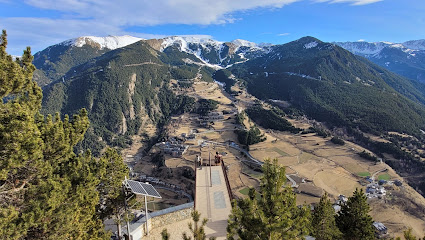
La Noblesse du temps - de Salvador Dalí
Explore La Noblesse du temps in Andorra la Vella, a surreal monument by Salvador Dalí that merges art, nature, and thought-provoking beauty.
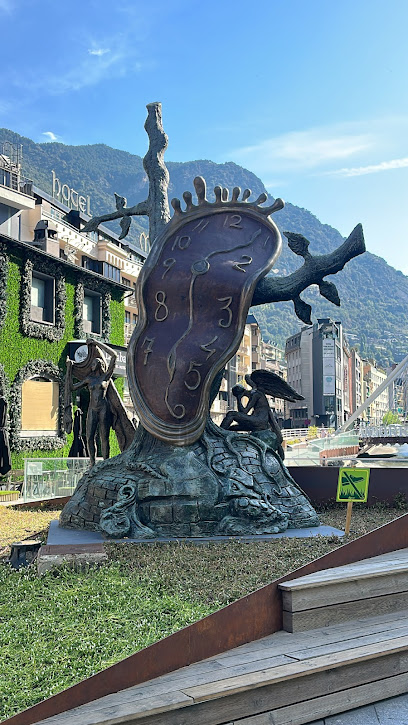
Sanctuary Basilica of Our Lady of Meritxell
Experience the serene beauty and unique architecture of the Sanctuary Basilica of Our Lady of Meritxell in the heart of Andorra's breathtaking mountains.

Sant Joan de Caselles Church
Explore the historical and architectural beauty of Sant Joan de Caselles Church in Andorra, a serene spot for reflection amidst stunning landscapes.
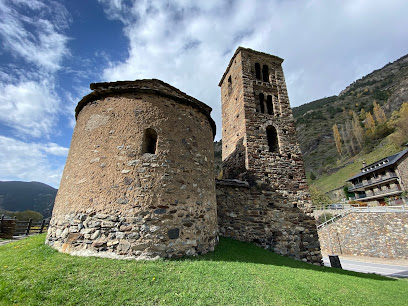
Casa de la Vall
Discover the rich history and cultural heritage of Andorra at Casa de la Vall, a museum that reveals the essence of this unique principality.
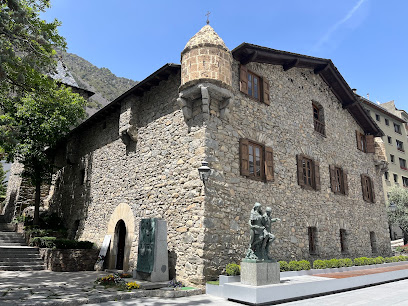
National Automobile Museum
Explore the National Automobile Museum in Encamp, where automotive history comes to life with a stunning collection of vintage cars and engaging exhibits.

Pont de la Margineda
Explore the historic Pont de la Margineda, a medieval bridge in Andorra la Vella offering stunning views and a glimpse into the region's rich heritage.

Museo Carmen Thyssen Andorra
Explore the artistic wonders at Museo Carmen Thyssen Andorra, showcasing European masterpieces in a serene setting in Les Escaldes.
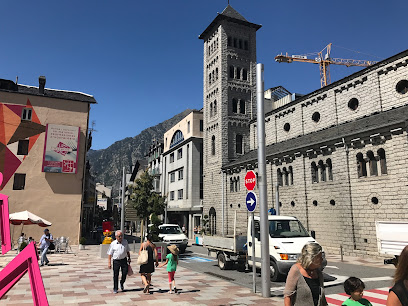
Església de Sant Climent de Pal
Discover the stunning Església de Sant Climent de Pal, a Romanesque masterpiece in the heart of Andorra, blending history, culture, and breathtaking scenery.
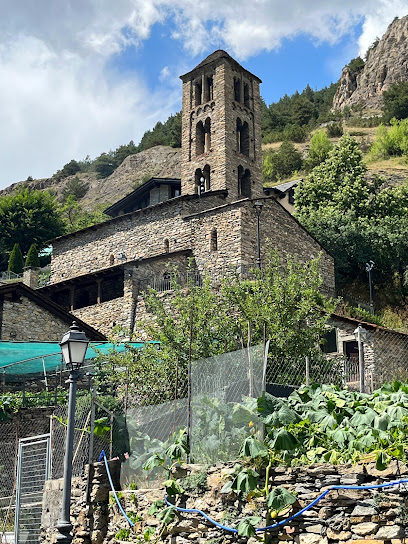
Sant Miquel Engolasters
Discover the serene beauty and historical significance of Sant Miquel Engolasters, a stunning Catholic church in Andorra's picturesque landscapes.

Madriu-Perafita-Claror Valley
Discover the natural beauty and cultural heritage of Madriu-Perafita-Claror Valley, a breathtaking national park in Andorra renowned for its stunning landscapes.

Pont d'Engordany
Experience the charm and beauty of the iconic Pont d'Engordany, a stunning bridge in Escaldes-Engordany that blends history with breathtaking views.

Pont de París
Discover the architectural beauty of Pont de París, an iconic bridge in Andorra la Vella offering stunning views and a vibrant local atmosphere.

Saint Peter the Martyr de les Escaldes
Discover the serene beauty and cultural significance of Saint Peter the Martyr de les Escaldes, a must-visit Catholic church in picturesque Andorra.
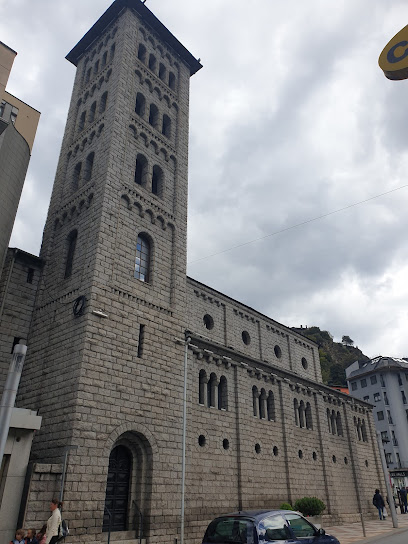
Farga Rossell
Explore the rich heritage of Andorra at Farga Rossell, where craftsmanship meets history in a captivating museum experience.
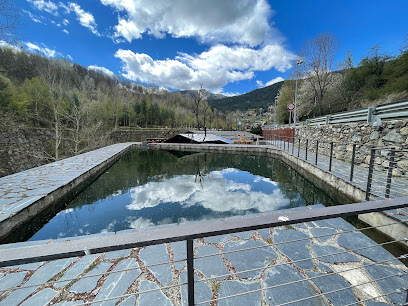
Unmissable attractions to see
Estació de muntanya Vall de Núria
Experience the thrill of skiing, hiking, and family fun in the stunning Vall de Núria, a top destination in the Catalonian Pyrenees.
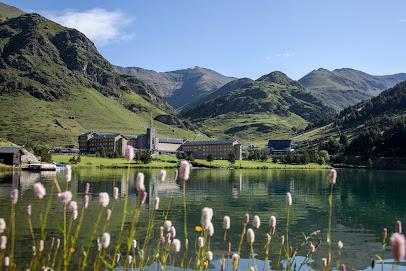
Mirador Roc Del Quer | Canillo
Experience stunning panoramic views at Mirador Roc Del Quer, Andorra's premier observation deck surrounded by breathtaking mountain landscapes.
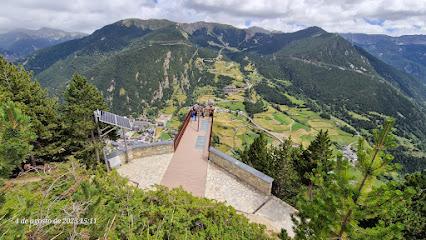
Grandvalira
Discover Grandvalira, Andorra's largest ski resort, where thrilling slopes and breathtaking mountain views await every winter sports enthusiast.

La Noblesse du Temps
Discover La Noblesse du Temps, a surreal monument in Andorra la Vella that invites reflection on time and existence amidst stunning mountain views.
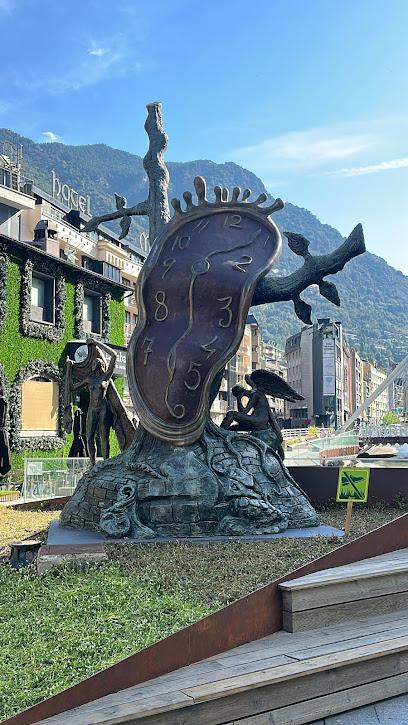
Parc Natural del Cadí-Moixeró
Discover the breathtaking landscapes and rich biodiversity of Parc Natural del Cadí-Moixeró, a top destination for nature lovers and outdoor adventurers in Barcelona.

Parc Central
Experience the natural beauty and tranquility of Parc Central, Andorra la Vella's urban oasis, perfect for relaxation and exploration.
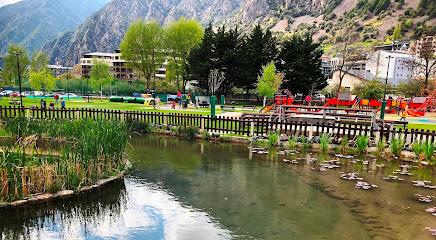
Grandvalira Estació de Ski Grau Roig
Experience the thrill of winter sports at Grandvalira Estació de Ski Grau Roig, the premier ski resort in Andorra offering stunning slopes and a vibrant alpine atmosphere.
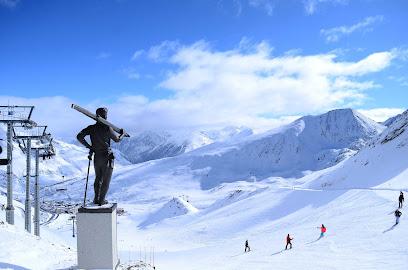
Sanctuary Basilica of Our Lady of Meritxell
Explore the Sanctuary Basilica of Our Lady of Meritxell, a serene pilgrimage site nestled in the Andorran mountains, blending spirituality with breathtaking architecture.

Rasos de Peguera
Experience the breathtaking beauty of nature at Rasos de Peguera, a premier ski resort and hiking area in the heart of Barcelona's stunning landscapes.
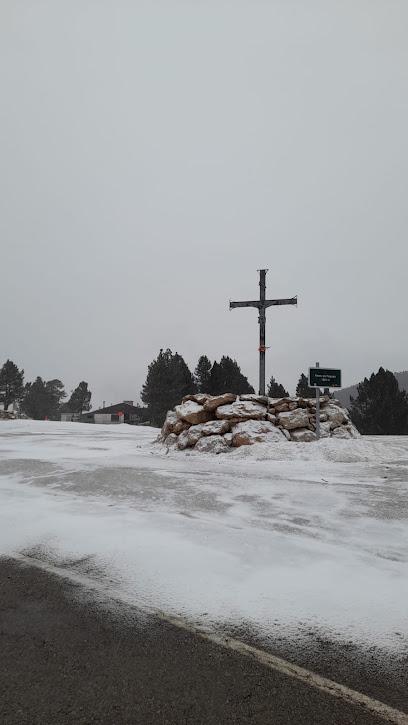
Château de Montségur
Discover the history and breathtaking views at Château de Montségur, a medieval fortress that tells the tale of the Cathar resistance.
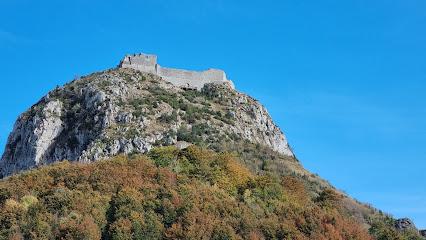
Station de ski de Porté-Puymorens
Experience the thrill of skiing in Porté-Puymorens, a stunning ski resort in the French Pyrenees, perfect for all skill levels and unforgettable alpine adventures.
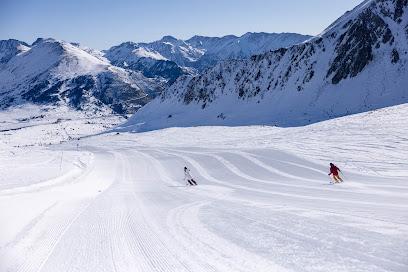
Sant Joan de Caselles Church
Discover the Sant Joan de Caselles Church, a stunning Romanesque gem in Andorra, rich in history and surrounded by breathtaking landscapes.
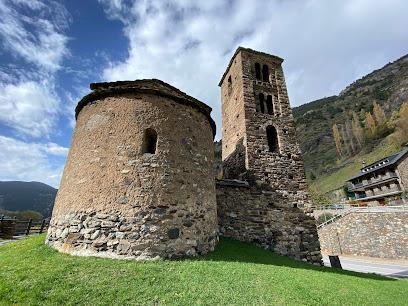
Casa de la Vall
Explore Casa de la Vall, a historical museum in Andorra la Vella showcasing the unique heritage and stunning architecture of this charming principality.

Palau de Gel d’Andorra
Discover the excitement of ice skating, swimming, and sports at Palau de Gel d’Andorra, a family-friendly complex in scenic Canillo.
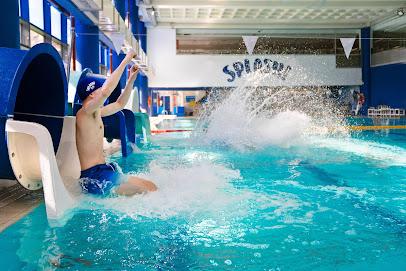
Grandvalira Estació de Ski Soldeu
Discover the ultimate ski experience at Grandvalira Estació de Ski Soldeu, where adventure meets breathtaking scenery in the heart of the Pyrenees.

Essential places to dine
El Refugi Alpí
Discover the flavors of the Alps at El Refugi Alpí in Andorra la Vella—your go-to destination for authentic fondue dining.
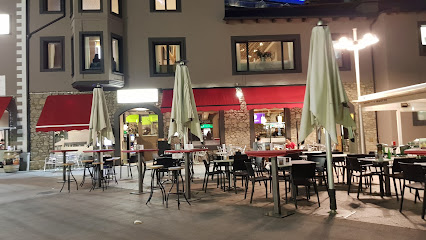
RESTAURANT BORDA L' ERA DEL ROSSELL
Discover authentic Andorran cuisine at Restaurant Borda L' Era Del Rossell near Santuario de Meritxell – a must-visit dining destination for tourists.

Refugi del Llac de Pessons
Discover gourmet dining at Refugi del Llac de Pessons, where stunning mountain views meet exquisite Andorran cuisine in an unforgettable alpine setting.

RESTAURANT BORDA DEL TREMAT
Experience authentic Andorran cuisine at Restaurant Borda del Tremat in Encamp – where tradition meets taste amidst stunning mountain views.
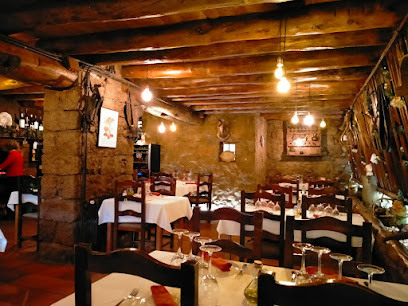
EL CACHIRULO
Discover El Cachirulo in Les Escaldes - a grill restaurant serving authentic local flavors amidst charming Andorran scenery.
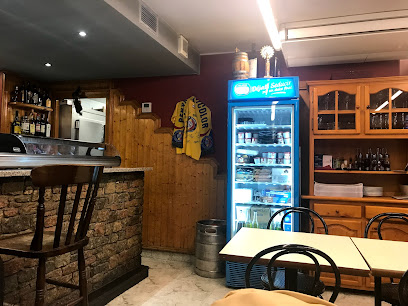
Restaurant El Marselles
Discover the rich culinary heritage of Andorra at Restaurant El Marselles in Pas de la Casa – where flavor meets hospitality.
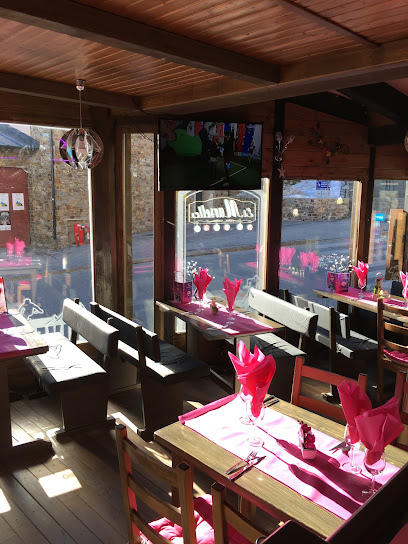
Borda Vella
Experience the essence of Andorran cuisine at Borda Vella in Encamp - where tradition meets modern culinary artistry.

La Cirera
Discover La Cirera in Encamp for an authentic Andorran dining experience with exquisite seafood dishes and local charm.
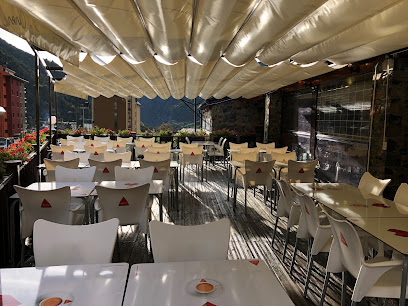
K L'Irina
Experience local flavors at K L'Irina, where cozy dining meets exceptional coffee in the heart of Andorra la Vella.
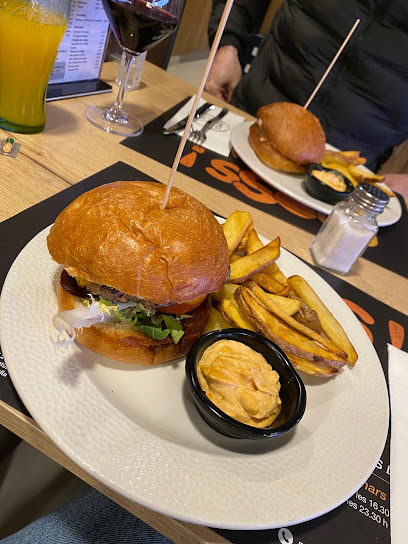
Restaurant Solanelles
Discover authentic Andorran flavors amidst breathtaking alpine scenery at Restaurant Solanelles in Encamp.

Restaurant CAN MANEL
Experience authentic Andorran cuisine at Restaurant CAN MANEL in Andorra la Vella - where tradition meets flavor.
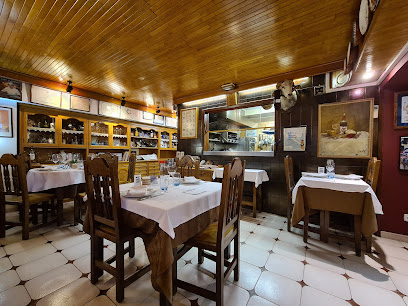
MiraKbé! Gastrobar & Restaurant
Experience authentic Andorran cuisine with a modern twist at MiraKbé! Gastrobar & Restaurant – where every meal tells a story.

Kökosnøt
Discover Kökosnøt in Andorra la Vella: Where Modern Cuisine Meets Local Flavors in an Elegant Setting.

Restaurant el Crostó
Experience authentic Andorran cuisine at Restaurant el Crostó – where local flavors meet exceptional service in Andorra la Vella.

Restaurant Llac i Cel | Engolasters
Experience authentic Andorran cuisine amidst breathtaking views at Restaurant Llac i Cel in Engolasters.
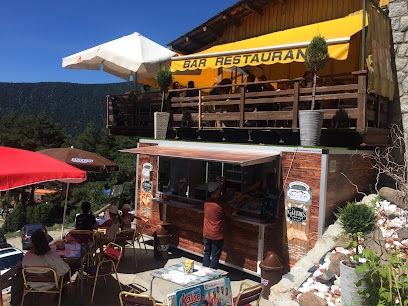
Markets, malls and hidden boutiques
Pyrénées Andorra
Experience the ultimate shopping and dining adventure at Pyrénées Andorra in the heart of Andorra la Vella, where variety meets quality.
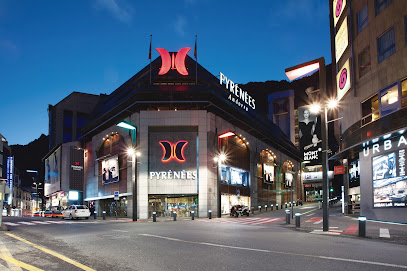
Lacoste Andorra
Discover Lacoste Andorra: A Stylish Haven for Fashion Enthusiasts in the Heart of Andorra la Vella.
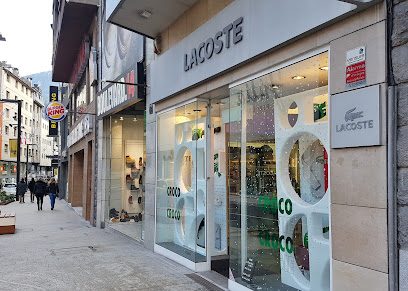
JEANS CULTE - VIA MODA
Discover the best denim fashion at Jeans Culte in Andorra la Vella, your ultimate destination for stylish clothing and accessories.
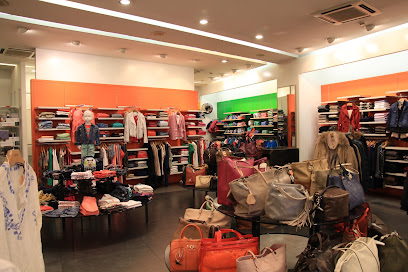
Coco Bis
Discover unique fashion at Coco Bis, a clothing store in Andorra la Vella, blending local style with contemporary trends for an unforgettable shopping experience.
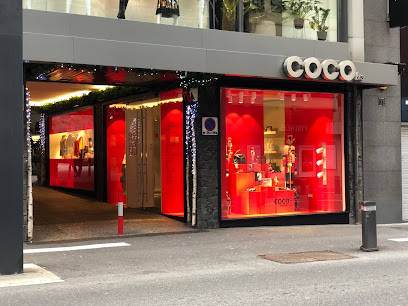
Shop-in-Shop Rituals
Discover the serene beauty of Rituals in Andorra la Vella, where luxury skincare and wellness meet in a tranquil shopping haven.

Meraki Zero Waste Shop
Explore sustainable living at Meraki Zero Waste Shop in Andorra la Vella, your go-to destination for organic products and eco-friendly choices.
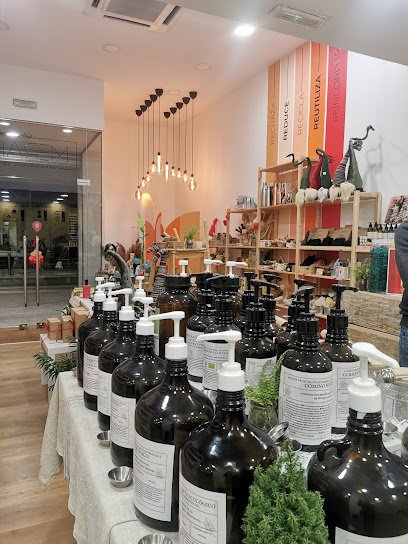
Luxury Watches - Official Jacob & Co Retailer -
Explore the exquisite world of luxury watches at the official Jacob & Co retailer in Andorra la Vella, where elegance meets craftsmanship.

Eurovisio
Explore Eurovisio in Andorra la Vella - your go-to destination for unique gift baskets showcasing local flavors and culture.
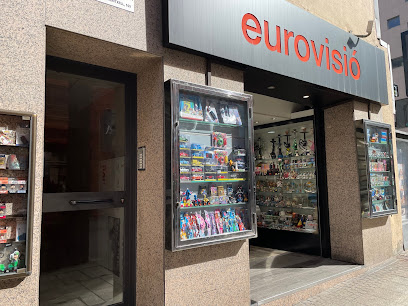
D-Kora
Explore the charm of D-Kora, Andorra la Vella's premier gift shop, featuring unique souvenirs and exquisite local craftsmanship.
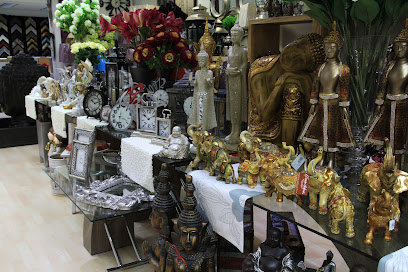
Ofelia home & decor - Andorra
Explore Ofelia Home & Decor in Andorra for exquisite home goods and unique souvenirs that capture the spirit of your travels.
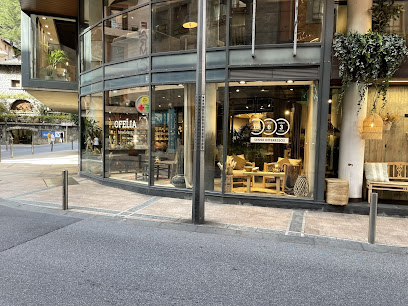
BESPOKE CLOSET
Explore Bespoke Closet in Andorra la Vella for an exclusive selection of high-end fashion and a personalized shopping experience.

Bon Preu
Explore Bon Preu in Andorra la Vella for a delightful variety of local and international products, perfect for tourists and locals alike.
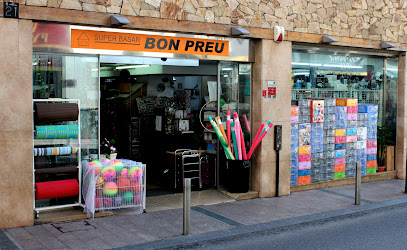
Establiments Lotus
Explore Establiments Lotus for an authentic Andorran shopping experience filled with local crafts and cultural treasures.
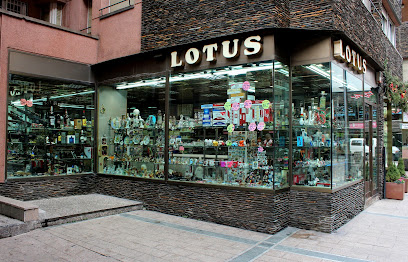
Casa Bellesa
Explore Casa Bellesa in Andorra la Vella for a stylish selection of premium footwear, perfect for every occasion.
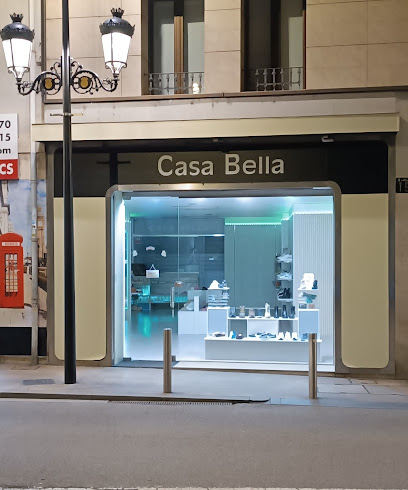
The Apartment
Discover fashion-forward styles at The Apartment, the go-to clothing store in Andorra la Vella for unique and trendy apparel.

Essential bars & hidden hideouts
La Cirera
Experience the fresh seafood delights of La Cirera, a cozy restaurant in Encamp, perfect for tourists seeking authenticity and flavor in Andorra.
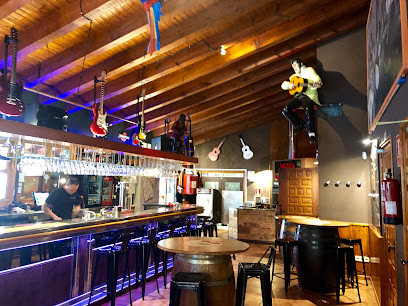
SIGNUM
Discover the authentic taste of Argentina at SIGNUM, where barbecue delights and local brews create an unforgettable dining experience in Encamp.
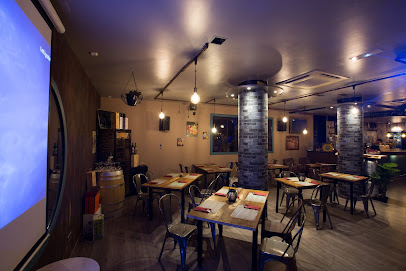
13,5° Wine Bar Andorra
Discover Andorra's vibrant wine culture at 13,5° Wine Bar, where exquisite wines meet delightful small plates in a cozy atmosphere.
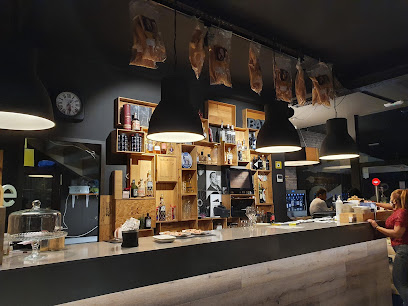
Paddy's Irish Bar
Experience the lively atmosphere and authentic Irish cuisine at Paddy's Irish Bar in El Pas de la Casa, a perfect spot for relaxation and fun.
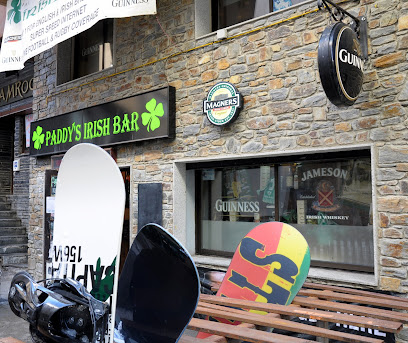
EL RANA Bar Cocktail
Discover the lively atmosphere and exquisite cocktails at EL RANA Bar Cocktail, a must-visit nightlife destination in Andorra la Vella.
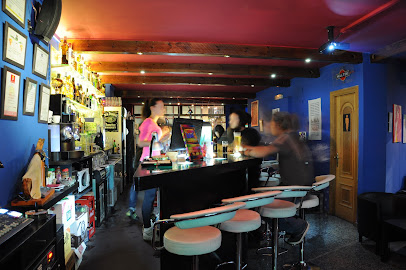
Restaurant Borda Major 5
Discover authentic Andorran flavors at Restaurant Borda Major 5, a cozy dining spot in Encamp perfect for tourists seeking local cuisine.

Taverna ta'picas
Discover the flavors of Andorra at Taverna ta'picas, a cozy bistro in Encamp offering authentic dishes at affordable prices.

Bacco wine bar andorra
Experience the finest wines and local delicacies at Bacco Wine Bar in Andorra la Vella, where every sip tells a story.
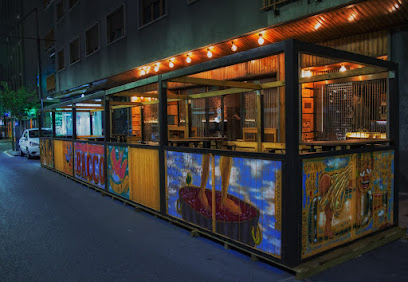
Restaurant Benito
Discover the heart of Andorra's culinary scene at Restaurant Benito, where local flavors meet affordable prices in a cozy setting.

The Underground Bar
Discover the vibrant nightlife of El Pas de la Casa at The Underground Bar, where delicious cocktails and a lively atmosphere await.
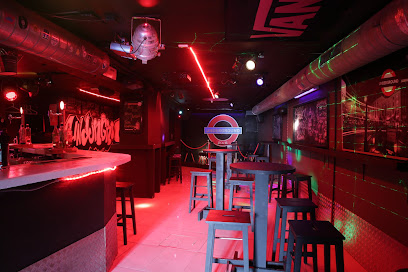
Red Lion Pub
Discover the welcoming atmosphere of Red Lion Pub in Pas de la Casa, where great drinks and friendly faces await you.

BAR GRANADA
Discover the delightful flavors and vibrant atmosphere of Bar Granada, Encamp's favorite grill bar, where every meal tells a story.
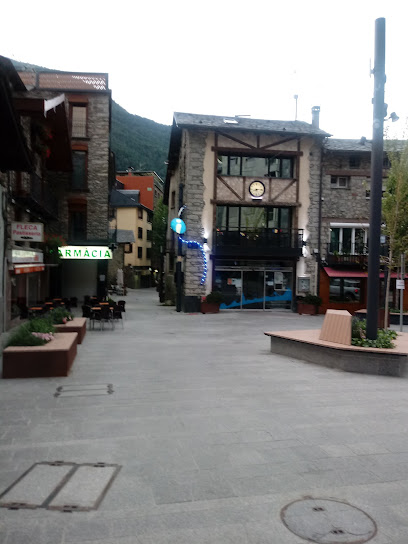
BAR ORLANDO
Experience the vibrant atmosphere at Bar Orlando in Encamp, where affordable drinks meet friendly service in a cozy setting.
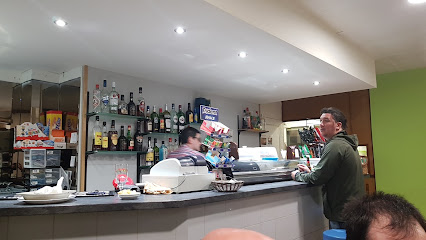
BAR LUGO
Discover the vibrant atmosphere and local charm of Bar Lugo in Encamp, where every sip tells a story of Andorra's rich culture.
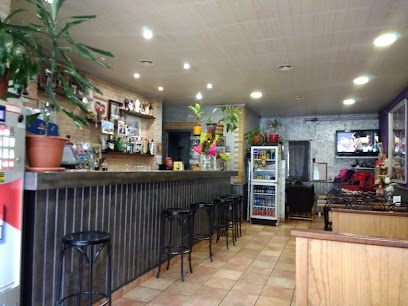
Duffy's Lounge
Discover the vibrant atmosphere of Duffy's Lounge in Encamp, where exquisite cocktails and delicious tapas create a memorable experience.

Local Phrases
-
- HelloHola
[oh-lah] - GoodbyeAdéu
[ah-deh-oo] - YesSí
[see] - NoNo
[noh] - Please/You're welcomeSi us plau/De res
[see oos plow/deh ress] - Thank youGràcies
[grah-syes] - Excuse me/SorryPerdó/Ho sento
[per-doh/oh sent-oh] - How are you?Com estàs?
[kom es-tahs] - Fine. And you?Bé. I tu?
[beh/ee too] - Do you speak English?Parles anglès?
[par-les ang-less] - I don't understandNo entenc
[noh en-tenk]
- HelloHola
-
- I'd like to see the menu, pleaseM'agradaria veure la carta, si us plau
[muh-grah-dee-ah vew-ray la kar-ta/see oos plow] - I don't eat meatNo menjo carn
[noh men-ho karn] - Cheers!Salut!
[sa-loot] - I would like to pay, pleaseVoldria pagar, si us plau
[vol-dree-ah pa-gar/see oos plow]
- I'd like to see the menu, pleaseM'agradaria veure la carta, si us plau
-
- Help!Ajuda!
[ah-zhoo-dah] - Go away!Vés-te'n!
[veis-ten] - Call the Police!Truca la policia!
[troo-ka la po-lee-sya] - Call a doctor!Truca un metge!
[troo-ka oon met-zhe] - I'm lostEstic perdut
[es-tik per-doot] - I'm illEstic malalt
[es-tik ma-lalt]
- Help!Ajuda!
-
- I'd like to buy...Voldria comprar...
[vol-dree-ah kom-prar] - I'm just lookingNomés estic mirant
[noh-mays es-tik mee-rant] - How much is it?Quant val?
[kwant val] - That's too expensiveAixò és massa car
[i-shoh es mah-sa kar] - Can you lower the price?Podeu baixar el preu?
[po-deh-oo bai-shar el prew]
- I'd like to buy...Voldria comprar...
-
- What time is it?Quina hora és?
[kee-nah or-ah es] - It's one o'clockÉs la una
[es la oo-nah] - Half past (10)Mitja deu
[mee-cha deh-oo] - MorningMatí
[mah-tee] - AfternoonTarda
[tar-dah] - EveningVespre
[ves-preh] - YesterdayAhir
[ah-eer] - TodayAvui
[ah-vwee] - TomorrowDemà
[deh-mah] - 1Un
[oon] - 2Dos
[doss] - 3Tres
[tress] - 4Quatre
[kwah-treh] - 5Cinc
[sink] - 6Sis
[sees] - 7Set
[set] - 8Vuit
[vwit] - 9Nou
[noh] - 10Deu
[deh-oo]
- What time is it?Quina hora és?
-
- Where's a/the...?On és un/el...?
[on es oon/el] - What's the address?Quina és l'adreça?
[kee-nah es luh-dre-sa] - Can you show me (on the map)?Em pots ensenyar (en el mapa)?
[em pots en-se-nyar/en el ma-pa] - When's the next (bus)?Quan passa el proper (autobús)?
[kwan pas-sah el pro-pair/ow-to-boos] - A ticket (to ....)Un bitllet (per a ....)
[oon bee-tlet/per a]
- Where's a/the...?On és un/el...?
History of Encamp
-
Encamp, like much of Andorra, has roots that trace back to medieval times. The area was initially settled due to its strategic location in the Pyrenees mountains, providing both a natural defense and a critical point for trade routes between France and Spain. During this period, the town developed around small agrarian communities and fortified structures to protect against invasions.
-
In the 9th century, Encamp became one of the parishes of Andorra, a status that it retains today. The parish system was an essential administrative and religious structure that helped organize the small mountain communities. The Church of Santa Eulàlia, which dates back to this period, stands as a testament to the religious and cultural heritage of the region.
-
During the 13th and 14th centuries, the influence of the Counts of Foix was significant in Encamp. This noble family played a crucial role in Andorra's history by establishing a co-principality that balanced the power between France and the Bishop of Urgell. This unique political arrangement has endured and continues to shape Andorra's identity.
-
The 19th and early 20th centuries brought significant changes to Encamp as the Industrial Revolution reached the Pyrenees. The introduction of electricity and modern infrastructure transformed the town. Textile mills, hydroelectric power stations, and improved transportation links contributed to economic growth and modernization, integrating Encamp more closely with the broader European economy.
-
During World War II, Andorra, including Encamp, maintained a stance of neutrality. Its strategic location in the Pyrenees made it a vital crossing point for refugees escaping the conflict. Many of these individuals passed through Encamp, seeking safety from the turmoil in Europe. This period highlighted Andorra's role as a sanctuary during times of conflict.
-
Post-World War II, Encamp saw a surge in tourism, transforming the local economy. The establishment of ski resorts and the promotion of Andorra's natural beauty attracted visitors from all over the world. The Funicamp, one of the longest cable cars in Europe, was constructed in the late 20th century, offering access to the Grandvalira ski area and boosting the town's appeal as a premier winter sports destination.
-
In recent decades, Encamp has focused on preserving its rich cultural heritage while embracing modernity. The establishment of the Museu Nacional de l'Automòbil showcases the history of transportation in Andorra, while traditional festivals and events, such as the Festa Major d'Encamp, celebrate the town's unique cultural identity. These efforts ensure that Encamp remains a vibrant community with a deep appreciation for its historical roots.
Encamp Essentials
-
Encamp is located in the Principality of Andorra. The nearest major airports are in Barcelona, Spain (El Prat Airport) and Toulouse, France (Blagnac Airport), both approximately 200 kilometers away. From these airports, you can take a bus service directly to Andorra, which typically takes around 3 to 4 hours. Alternatively, you can rent a car and drive to Encamp, enjoying the scenic Pyrenees mountains along the way.
-
Encamp is well-connected by public transport. The local bus service, operated by Cooperativa Interurbana Andorrana, offers convenient routes within Encamp and to other parts of Andorra. Taxis are also available and can be hailed on the street or booked in advance. Renting a car is another option, especially if you plan to explore the surrounding areas. The Funicamp cable car is a must-try, providing a unique and scenic route to the Grau Roig sector of the Grandvalira ski resort.
-
The official currency in Andorra is the Euro (EUR). Credit and debit cards are widely accepted in hotels, restaurants, and shops. ATMs are plentiful, and you can withdraw cash using international bank cards. It's advisable to carry some cash for smaller purchases or in rural areas where card payments might not be accepted.
-
Encamp is generally a safe destination for tourists. However, standard precautions should be taken. Avoid leaving your belongings unattended and be cautious in crowded areas. While Andorra has a low crime rate, it is always wise to stay vigilant. There are no specific high-crime areas targeting tourists in Encamp.
-
In case of an emergency, dial 112 to reach emergency services, including police, fire, and medical assistance. Encamp has medical facilities and pharmacies for minor health issues. It's recommended to have travel insurance that covers medical emergencies and other unforeseen events.
-
Fashion: Do dress in layers as the weather can change quickly, especially in the mountains. Avoid overly casual clothing when dining in finer establishments. Religion: Do respect religious customs and dress modestly when visiting churches. Public Transport: Do be punctual for bus schedules. Don't play loud music or talk loudly on public transport. Greetings: Do greet locals with a friendly 'Hola' or 'Bonjour'. A handshake is customary in formal situations. Eating & Drinking: Do try local dishes like trinxat and escudella. Don’t leave food on your plate as it can be considered wasteful.
-
To experience Encamp like a local, visit the town's markets and interact with the vendors. Take a walk along the beautiful hiking trails, especially the Camí de les Pardines, which offers stunning views. Engage with locals at cafes and bars, and don’t hesitate to ask for recommendations. During the winter, make the most of the ski resorts and in summer, explore the biking trails and lakes.
Trending Landmark in Encamp
-
Mirador Roc Del Quer | Canillo
-
La Noblesse du temps - de Salvador Dalí
-
Sanctuary Basilica of Our Lady of Meritxell
-
Sant Joan de Caselles Church
-
Casa de la Vall
-
National Automobile Museum
-
Pont de la Margineda
-
Museo Carmen Thyssen Andorra
-
Església de Sant Climent de Pal
-
Sant Miquel Engolasters
-
Madriu-Perafita-Claror Valley
-
Pont d'Engordany
-
Pont de París
-
Saint Peter the Martyr de les Escaldes
-
Farga Rossell
Nearby Cities to Encamp
-
Things To Do in Canillo
-
Things To Do in Escaldes-Engordany
-
Things To Do in La Massana
-
Things To Do in Andorra la Vella
-
Things To Do in Ordino
-
Things To Do in Soldeu
-
Things To Do in Arinsal
-
Things To Do in El Serrat
-
Things To Do in Pas de la Casa
-
Things To Do in Girona
-
Things To Do in Toulouse
-
Things To Do in Lleida
-
Things To Do in Barcelona
-
Things To Do in Lourdes
-
Things To Do in Tarragona








